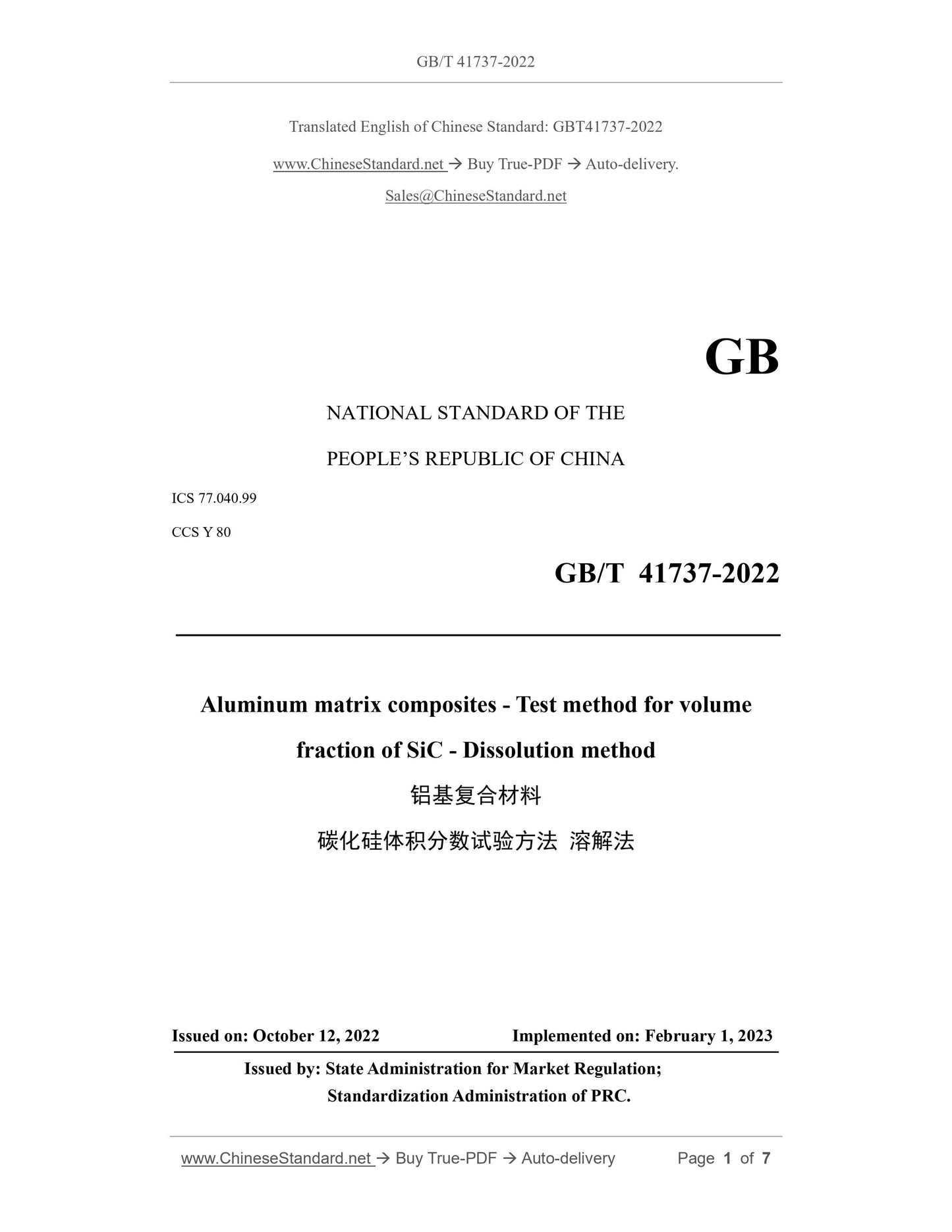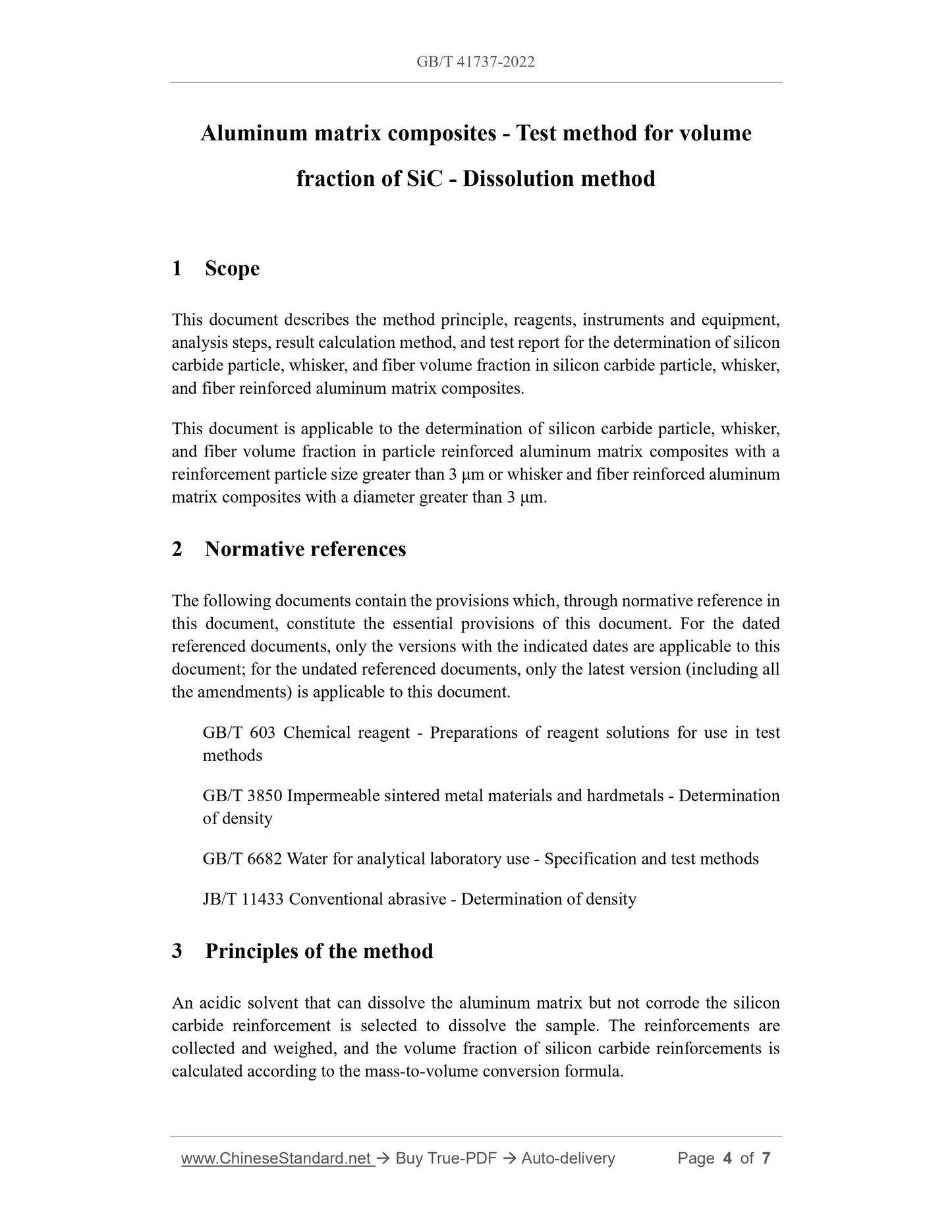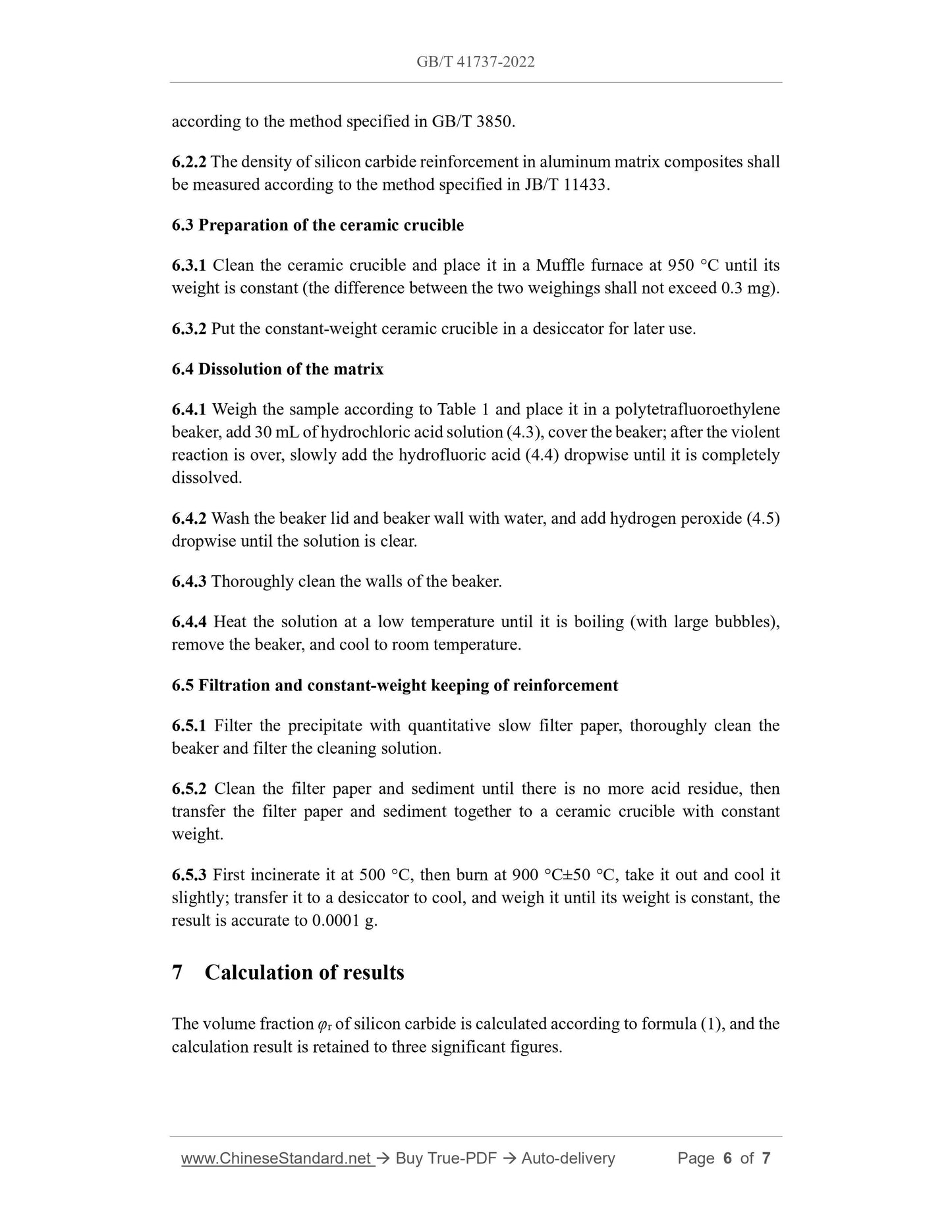1
/
of
4
www.ChineseStandard.us -- Field Test Asia Pte. Ltd.
GB/T 41737-2022 English PDF (GB/T41737-2022)
GB/T 41737-2022 English PDF (GB/T41737-2022)
Regular price
$110.00
Regular price
Sale price
$110.00
Unit price
/
per
Shipping calculated at checkout.
Couldn't load pickup availability
GB/T 41737-2022: Aluminum matrix composites - Test method for volume fraction of SiC - Dissolution method
Delivery: 9 seconds. Download (and Email) true-PDF + Invoice.Get Quotation: Click GB/T 41737-2022 (Self-service in 1-minute)
Newer / historical versions: GB/T 41737-2022
Preview True-PDF
Scope
This document describes the method principle, reagents, instruments and equipment,analysis steps, result calculation method, and test report for the determination of silicon
carbide particle, whisker, and fiber volume fraction in silicon carbide particle, whisker,
and fiber reinforced aluminum matrix composites.
This document is applicable to the determination of silicon carbide particle, whisker,
and fiber volume fraction in particle reinforced aluminum matrix composites with a
reinforcement particle size greater than 3 μm or whisker and fiber reinforced aluminum
matrix composites with a diameter greater than 3 μm.
Basic Data
| Standard ID | GB/T 41737-2022 (GB/T41737-2022) |
| Description (Translated English) | Aluminum matrix composites - Test method for volume fraction of SiC - Dissolution method |
| Sector / Industry | National Standard (Recommended) |
| Classification of Chinese Standard | Y80 |
| Classification of International Standard | 77.040.99 |
| Word Count Estimation | 6,622 |
| Date of Issue | 2022-10-12 |
| Date of Implementation | 2023-02-01 |
| Issuing agency(ies) | State Administration for Market Regulation, China National Standardization Administration |
Share







